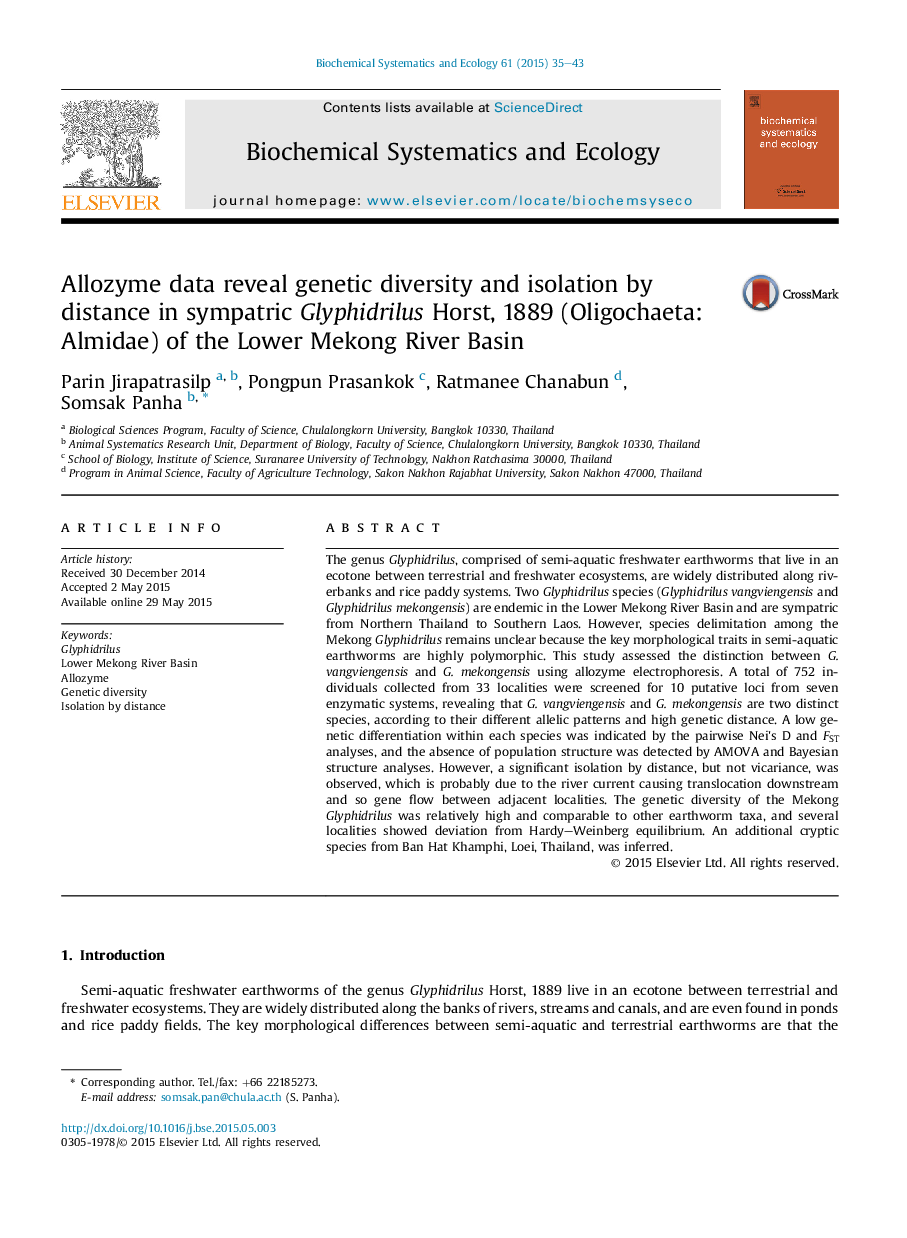| Article ID | Journal | Published Year | Pages | File Type |
|---|---|---|---|---|
| 1354181 | Biochemical Systematics and Ecology | 2015 | 9 Pages |
•Two sympatric Glyphidrilus in the Mekong Basin are confirmed by allozyme data.•Both low differentiation and isolation by distance were found in both species.•Genetic diversity was high and some localities showed deviation from HWE.•Translocation by water may lead to high gene flow within each species.•An additional cryptic Glyphidrilus species was found in Northeastern Thailand.
The genus Glyphidrilus, comprised of semi-aquatic freshwater earthworms that live in an ecotone between terrestrial and freshwater ecosystems, are widely distributed along riverbanks and rice paddy systems. Two Glyphidrilus species (Glyphidrilus vangviengensis and Glyphidrilus mekongensis) are endemic in the Lower Mekong River Basin and are sympatric from Northern Thailand to Southern Laos. However, species delimitation among the Mekong Glyphidrilus remains unclear because the key morphological traits in semi-aquatic earthworms are highly polymorphic. This study assessed the distinction between G. vangviengensis and G. mekongensis using allozyme electrophoresis. A total of 752 individuals collected from 33 localities were screened for 10 putative loci from seven enzymatic systems, revealing that G. vangviengensis and G. mekongensis are two distinct species, according to their different allelic patterns and high genetic distance. A low genetic differentiation within each species was indicated by the pairwise Nei's D and FST analyses, and the absence of population structure was detected by AMOVA and Bayesian structure analyses. However, a significant isolation by distance, but not vicariance, was observed, which is probably due to the river current causing translocation downstream and so gene flow between adjacent localities. The genetic diversity of the Mekong Glyphidrilus was relatively high and comparable to other earthworm taxa, and several localities showed deviation from Hardy–Weinberg equilibrium. An additional cryptic species from Ban Hat Khamphi, Loei, Thailand, was inferred.
Graphical abstractFigure optionsDownload full-size imageDownload as PowerPoint slide
